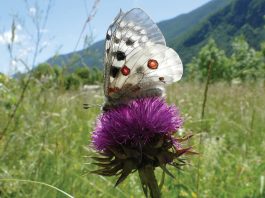An innovative team of researchers have successfully used Artificial Intelligence (AI) to further their understanding of biodiversity in birds, by training computers to recognise individual birds.
A new study demonstrates for the first time that AI can be used to train computers to recognise individual birds, allowing researchers to accurately measure the biodiversity of birds.
“We show that computers can consistently recognise dozens of individual birds, even though we cannot ourselves tell these individuals apart. In doing so, our study provides the means of overcoming one of the greatest limitations in the study of wild birds – reliably recognising individuals.” Said Dr André Ferreira at the Center for Functional and Evolutionary Ecology (CEFE), France, and lead author of the study.
Distinguishing individual animals from each other is important for the long-term monitoring of the biodiversity of birds and protecting species from climate change. Humans can identify individual birds by assessing colour variations and size differences, this method is often time consuming and prone to error.
Training AI models to identify individual birds
In the journal Methods in Ecology and Evolution, Researchers from institutes in France, Germany, Portugal, and South Africa describe the process of collecting thousands of labelled images of birds and then using this data to train and test AI models. This study represents the first successful attempt to do this in birds.
The team trained the AI models to recognise images of individual birds in wild populations of great tits, sociable weavers, and captive zebra finches, some of the most studied birds in behavioural ecology. After training, the AI models were tested with images of the individuals they had not seen before and had an accuracy of over 90% for the wild species and 87% for the captive zebra finches.
Dr André Ferreira said: “The development of methods for automatic, non-invasive identification of animals completely unmarked and unmanipulated by researchers represents a major breakthrough in this research field. Ultimately, there is plenty of room to find new applications for this system and answer questions that seemed unreachable in the past.”
The challenge of identifying individual birds
For AI models to accurately identify individuals, they must be trained with thousands of labelled images. Social media companies can do this for human recognition because they have access to millions of pictures of different people that are voluntarily tagged by users. However, acquiring such labelled photographs of animals is difficult and has created a bottleneck in research.
The team overcame this challenge by building feeders with camera traps and sensors. Most birds in the study populations carried a tag, like the microchips implanted in pets. Antennae on the bird feeders were able to identify of the bird from these tags and trigger the cameras.
The authors caution that the AI model is only able to re-identify individuals it has been shown before. “The model is able to identify birds from new pictures as long as the birds in those pictures are previously known to the models. This means that if new birds join the study population the computer will not be able to identify them.” said Dr André Ferreira.









